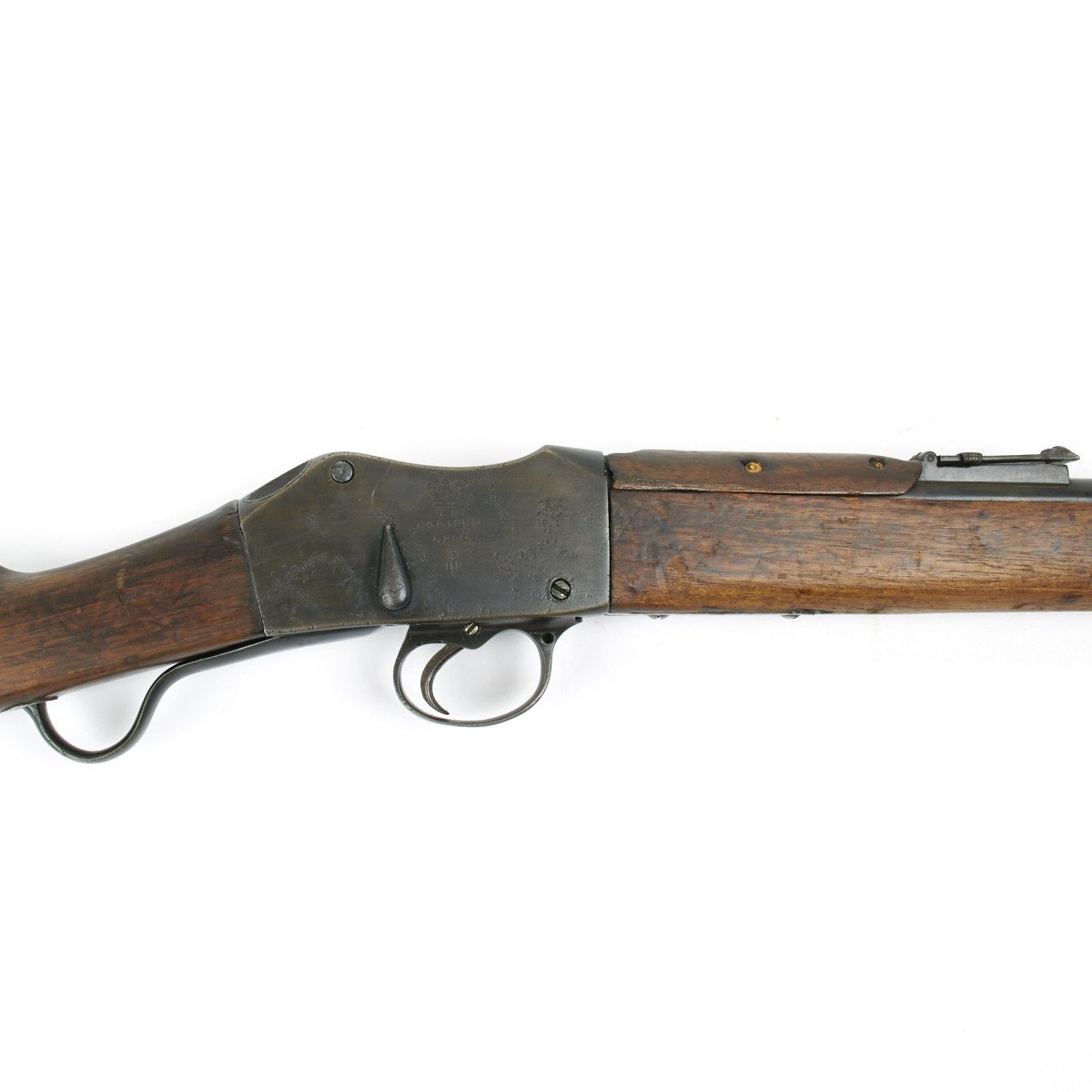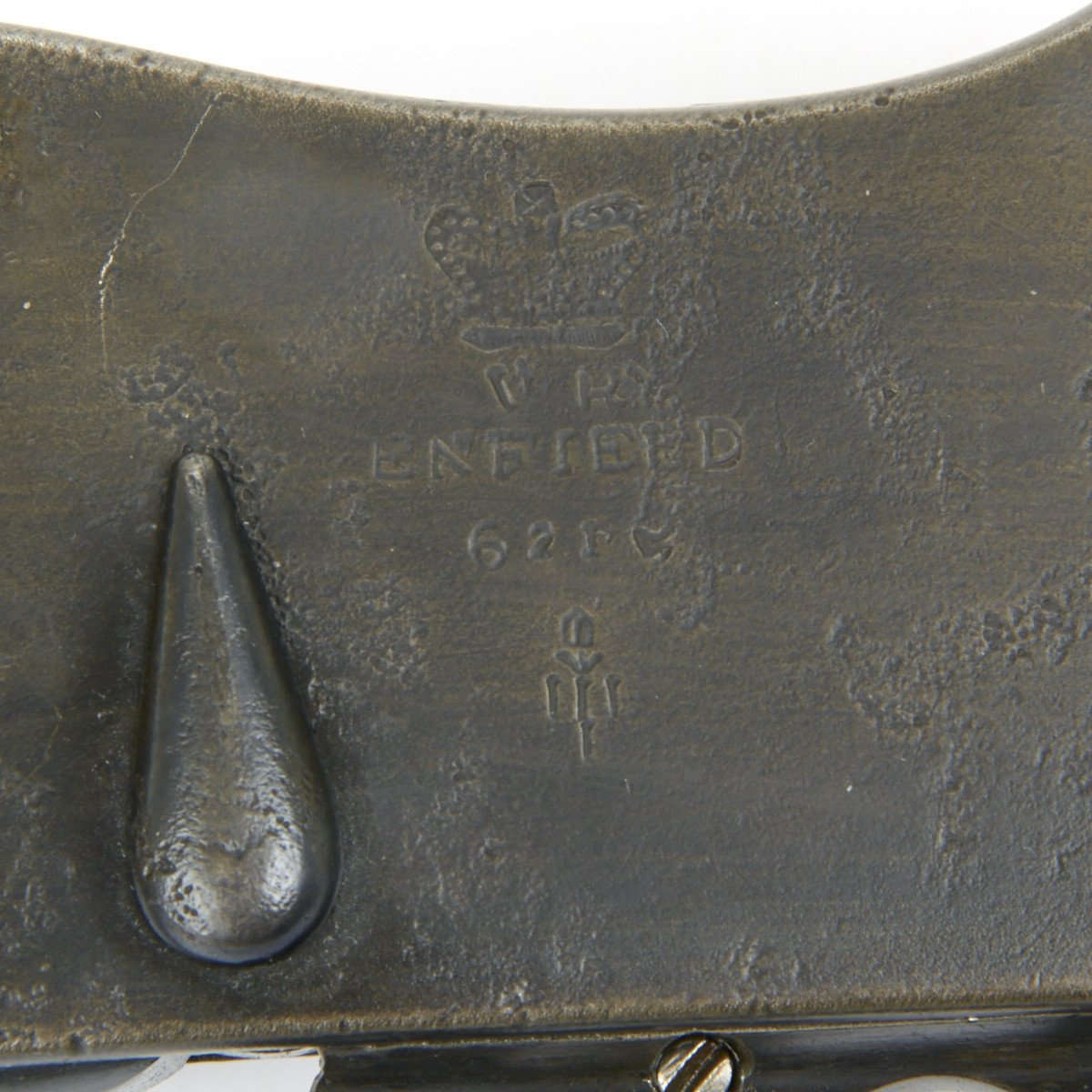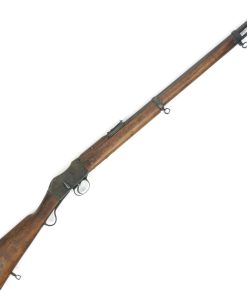Original British .303 P-1895 Martini-Enfield Mk I Rifle – Dated 1895 Original Items
$ 995,00 $ 248,75
Original Item: Only One Available. This 1895 dated Martini-Enfield rifle is a conversion of the Zulu War era .450/577 Martini-Henry re-chambered for use with the .303 British cartridge.
The Martini-Enfield Mk I was effectively a Martini-Henry Mk III re-barreled to .303 and with a new extractor installed, whilst the Martini-Enfield Mk II rifles were generally of new manufacture- although there are examples of converted Mk II rifles.
In 1888 the British introduced the .303 caliber Lee Metford bolt Action Rifle. The name
derived from the use of the .303 caliber barrels having Metford rifling. Many old Martini Henry Rifles were converted from their original .450/.577 caliber to the new smaller cartridge which entailed using a brand new slimmer barrel and consequently a completely new wood fore end and mounts.
In 1895 the British introduced the improved .303 Enfield Rifling so the model was changed accordingly to the P-1895. New manufacture of Martini Rifles in the .303 caliber was also introduced so some Martini examples were never in the old .450/.577 caliber.
This rifle is a Martini MkIII either converted in 1895 using the .303 caliber rifling. The action still retains a crown over V.R. is marked ENFIELD and the wood butt stock and the brass marking disc are both stamped with the date of 1895.
The fore stock wood is of the late, post 1888 style, fitted with a bayonet stand for the P-1888 Metford/Enfield Bayonet, this model did not accept a socket bayonet and was fitted with a ramp front sight.
These rifles were mostly issued to colonial troops these single shot .303 caliber rifles were well out-matched by the British Tommy’s Long Lee-Metford or Long Lee-Enfield bolt-action magazine rifle, which used the same cartridge.
This is a scarce .303 caliber Martini Enfield Rifle dated to first year of production of 1895.
History of the Martini-Enfield Mk1 Rifle:
Originally Martini-Henry conversions used Metford rifled barrels (and were known as Martini-Metford rifles), which were more than suitable for the first .303 cartridges, which used black powder as a propellant, but they wore out very quickly when fired with cordite/nitrocellulose cartridges (introduced in 1895) and so in 1895 the Enfield rifled barrel was introduced, which was much more satisfactory and suitable for use with “modern” (smokeless) ammunition.
The Martini-Enfield was in service from 1895-1918 (Lawrence of Arabia’s Arab Irregulars were known to have used them during the Arab Revolt of 1916-1918, along with any other firearms they could acquire), and it remained a Reserve Arm in places like India and New Zealand until well into World War II.
Martini-Enfield rifles were manufactured/converted by:
RSAF (Royal Small Arms Factory), Enfield Lock
LSA Co (London Small Arms Co)
BSA & M Co (Birmingham Small Arms & Metals Co, later simply BSA)
HRB Co (Henry Rifle Barrel Co, later went out of business and taken over by Blenheim Engineering)
NA&A Co (National Arms & Ammunition Co)
Fast Shipping with Professional Packaging
Thanks to our longstanding association with UPS FedEx DHL, and other major international carriers, we are able to provide a range of shipping options. Our warehouse staff is expertly trained and will wrap your products according to our exact and precise specifications. Prior to shipping, your goods will be thoroughly examined and securely secured. We ship to thousands clients each day across multiple countries. This shows how we're dedicated to be the largest retailer on the internet. Warehouses and distribution centres can be located throughout Europe as well as the USA.
Note: Orders with more than one item will be assigned a processing date depending on the item.
Before shipping before shipping, we'll conduct a thorough inspection of the items you have ordered. Today, the majority of orders will be delivered within 48 hours. The delivery time will be between 3-7 days.
Returns
The stock is dynamic and we cannot completely manage it because multiple stakeholders are involved, including our factory and warehouse. So the actual stock may alter at any time. It's possible that you may not receive your order once the order has been made.
Our policy is valid for a period of 30 days. If you don't receive the product within 30 days, we are not able to issue a refund or an exchange.
You can only return an item if it is unused and in the same state as the day you received it. You must have the item in its original packaging.
Related products
Uncategorized
Uncategorized
Uncategorized
Uncategorized
Armored Burgonet Helmet & Polearm from Scottish Castle Leith Hall Circa 1700 Original Items
Uncategorized
Armoured Fighting Vehicles of the World: AFVs of World War One (Hardcover Book) New Made Items
Uncategorized
Uncategorized
Uncategorized
Uncategorized
Uncategorized
Uncategorized
Uncategorized
Uncategorized
Uncategorized
Uncategorized
Uncategorized












































































